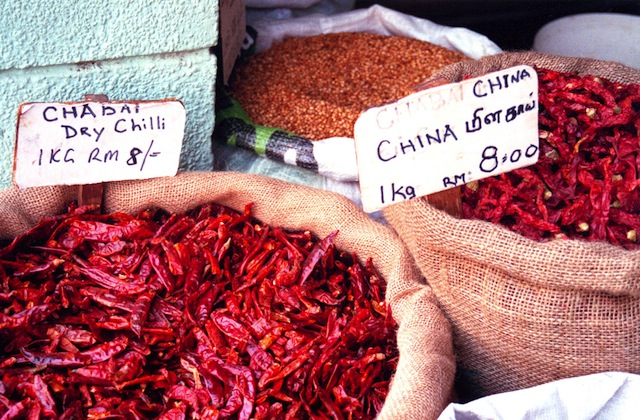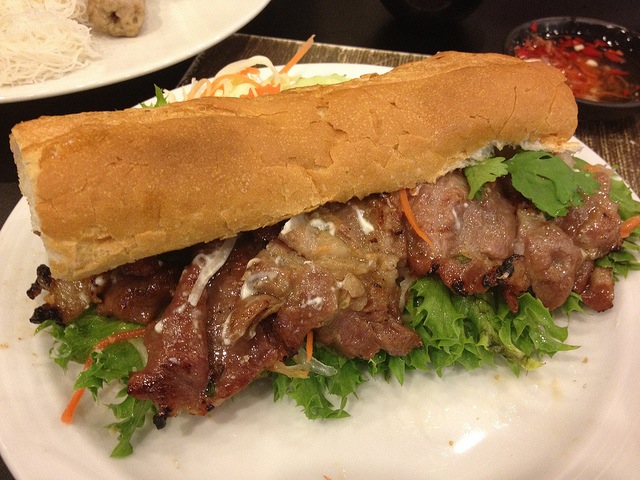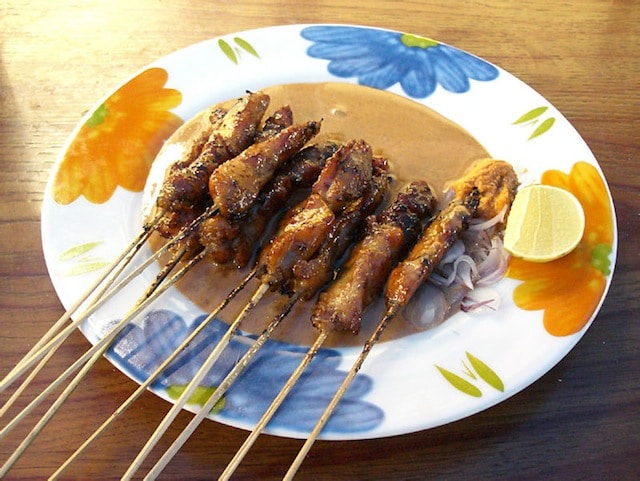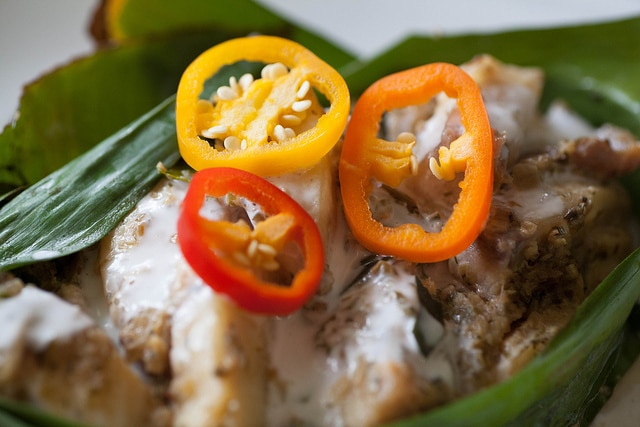Tasty Travel: A Guide To Southeast Asian Culture Through Spices

Chilies are a major part in much of Southeast Asia's cuisine — but not all. Photo courtesy of bethan.
Southeast Asian foods are known first and foremost for packing a spicy punch. Herbs and spices are featured front and center in dishes from across the subcontinent, but even under this overarching theme, each country and region has its own unique characteristics.
As many areas of Southeast Asia rely on the use of local ingredients, distinctive regional cuisines have developed depending on the types of products available in each location. Recipes were often passed down through generations and although trade has opened up a world of products, many chefs still enjoy cooking with traditional instruments such as a pestle and mortar to blend these Asian spices.

Pad Thai Kung, a traditional Thai dish. Photo courtesy of Terence Ong.
Thailand
Thailand's cuisine holds very true to the hot and spicy reputation; however, the heat and aroma goes beyond just setting tongues on fire. Many of the herbs and spices in Thai dishes are selected not only for their taste, but also for their medicinal purposes.
For example, chilies ("phrik" in Thai), which are as much of a staple to the cuisine as rice or noodles, contain the compound capsaicin. On its own, capsaicin is used in creams to treat muscle and joint aches. In chilies, this is the compound that gives them their heat and is also good for your respiratory system and can help regulate blood pressure. This means the spicier the chili, the more benefits it has. There are five main types of chilies used in Thai cooking, increasing in spiciness as they get smaller in size.
While chilies can sometimes be used on their own to add heat or as a garnish, they are more often combined with garlic, Thai ginger or lemongrass to form a chili paste. This is then used as a flavoring for almost any dish, including several soups like the popular Tom Yam.
While chilies and Asian spices may dominate many meals, Thai cuisine has four essential tastes: salty, sour, sweet and (of course) spicy. To round out the flavors, kaffir limes, cinnamon, cloves, mint and turmeric all help to add additional palatable depth to meals.

Bahn Mi sandwiche with Vietnamese barbecue pork. Photo courtesy of Jeff Kovacs.
Vietnam
While the flavors of Thailand are known for their heat, Vietnamese cuisine is known for its freshness. Crisp herbs are so important they're often served on their own plate during meals. This ensures each person can flavor their meal to their heart's content, be it anything from soups to spring rolls to sandwiches to noodles. When Vietnamese immigrants first began to settle in America, they would often have their relatives send herb seeds to them in the mail so they could grow their own plants and eat freshly-picked herbs in their food.
If these precious flavors were to be cooked into a dish — as they're typically left uncooked — they would often be added just before the food was taken off a heat source, so that the fresh, crispy flavor wouldn't get fried out.
Mint, basil, dill and coriander are common additions across the country, but each region hosts its own specialties. In North Vietnam all fish dishes are prepared with dill, while in central Vietnam beef is always cooked with chili and lemongrass. Meanwhile, Southern Vietnamese prefer to use spearmint with their fish, coconut water in stews and cilantro and rice paddy herbs in soups. Vietnamese cuisine takes influence not only from what is regionally available, but also from its past. As a previous colony of France, French tastes have also made their way into the cuisine and French cheeses and baguettes are used in popular bahn mi sandwiches.

Sate Ponorogo, a traditional Indonesian dish. Photo courtesy of Gunawan Kartapranata.
Indonesia
Most likely the original source of Southeast Asia's spicy nature, Indonesia's Maluku islands have actually been dubbed the "Spice Islands." They have played a key role as a trading partner for India, China, Holland and Spain, introducing international staples like nutmeg and cloves to the rest of the globe. The frequent trading meant these isles also received many imported spices, leading to Indonesian cooking to become an international melting pot. With this, there are separate words in Indonesian for spice ("rempah") and a mixture of spices ("bumbu"). Today, one of the most well known mixtures is sambal, a spicy sauce composed of fish paste, garlic, ginger, shallots, lime juice and vinegar. It was first created in the 16th century when trade was established between Spain and Indonesia.
The endless (and delicious) national rice and noodle dishes are seldom complete without banana leave, basil, chili, turmeric, galangal root (an herb similar to ginger), candlenut or coriander. More often than not, they'll contain a full mixture of these flavors.

Traditional Cambodian fish amok. Photo courtesy of SodanieChea.
Cambodia
If spicy chilies aren't your thing, you don't have to write off Southeast Asia as a taste destination. Khmer cuisine of Cambodia is one of the oldest types of cooking, so ancient it outdates the use of spicy chilies. Instead of heat, dishes like fish amok and even Khmer curry use fresh ingredients and more subtle flavors from various kroeungs. These are traditional Khmer herb pastes made from combinations of lemongrass, kaffir limes, galangal, turmeric, garlic and shallots.
The post Tasty Travel: A Guide To Southeast Asian Culture Through Spices appeared first on Epicure & Culture.